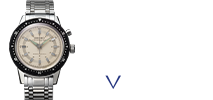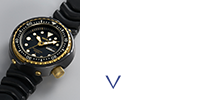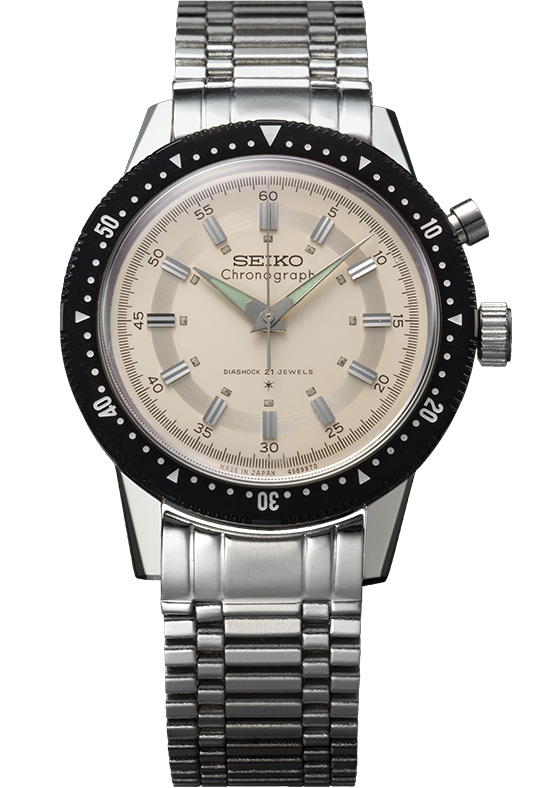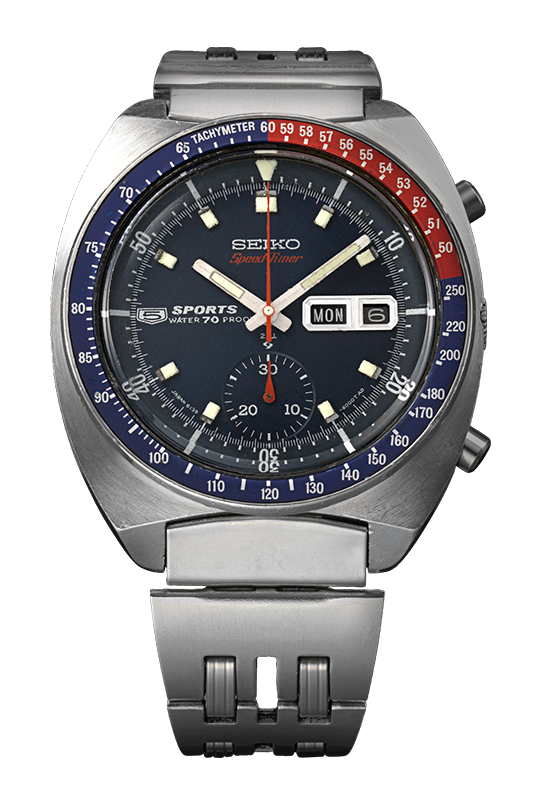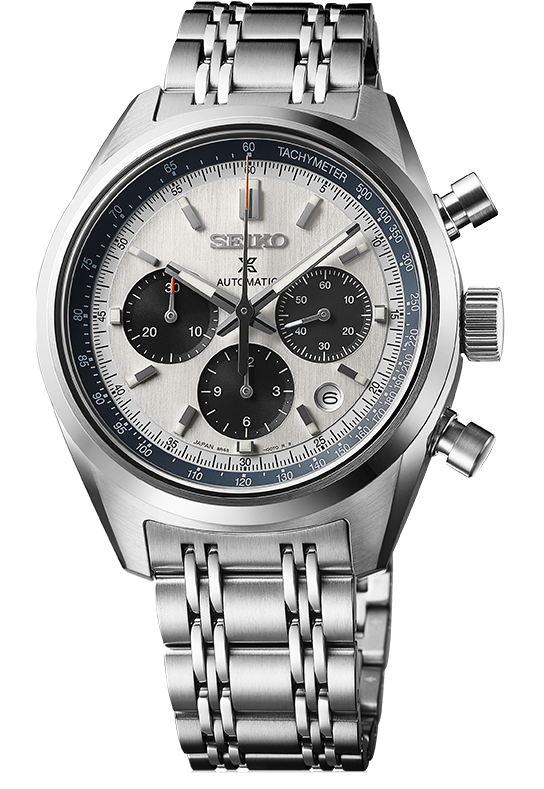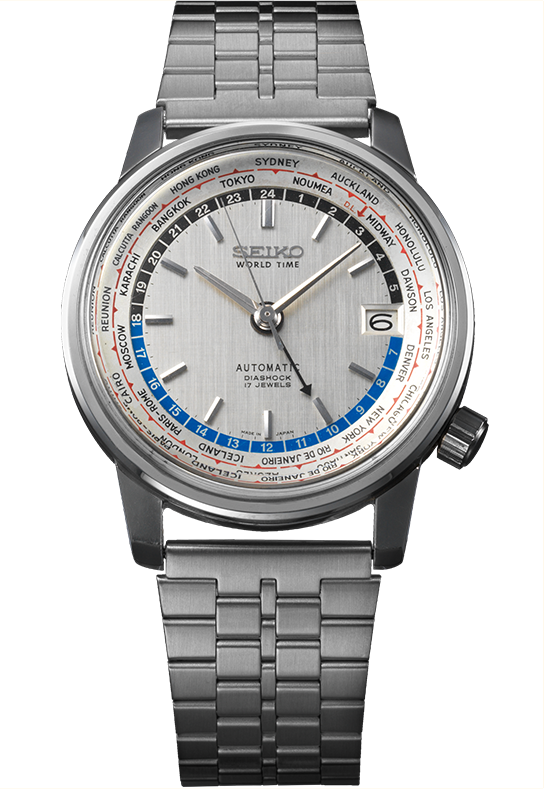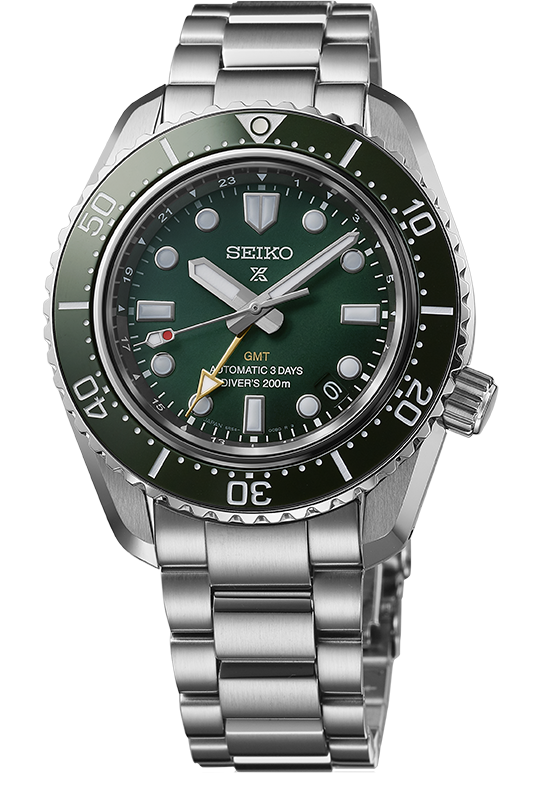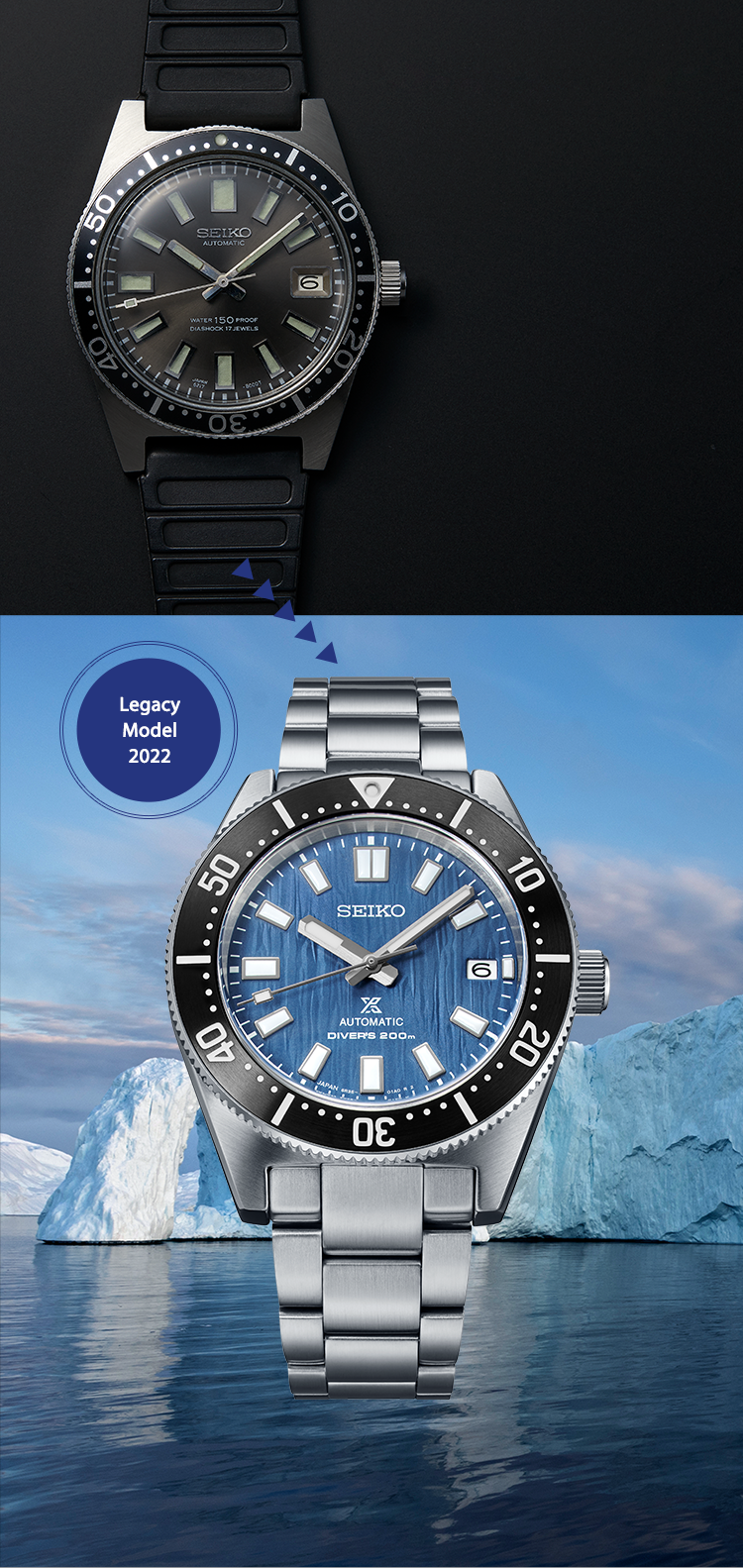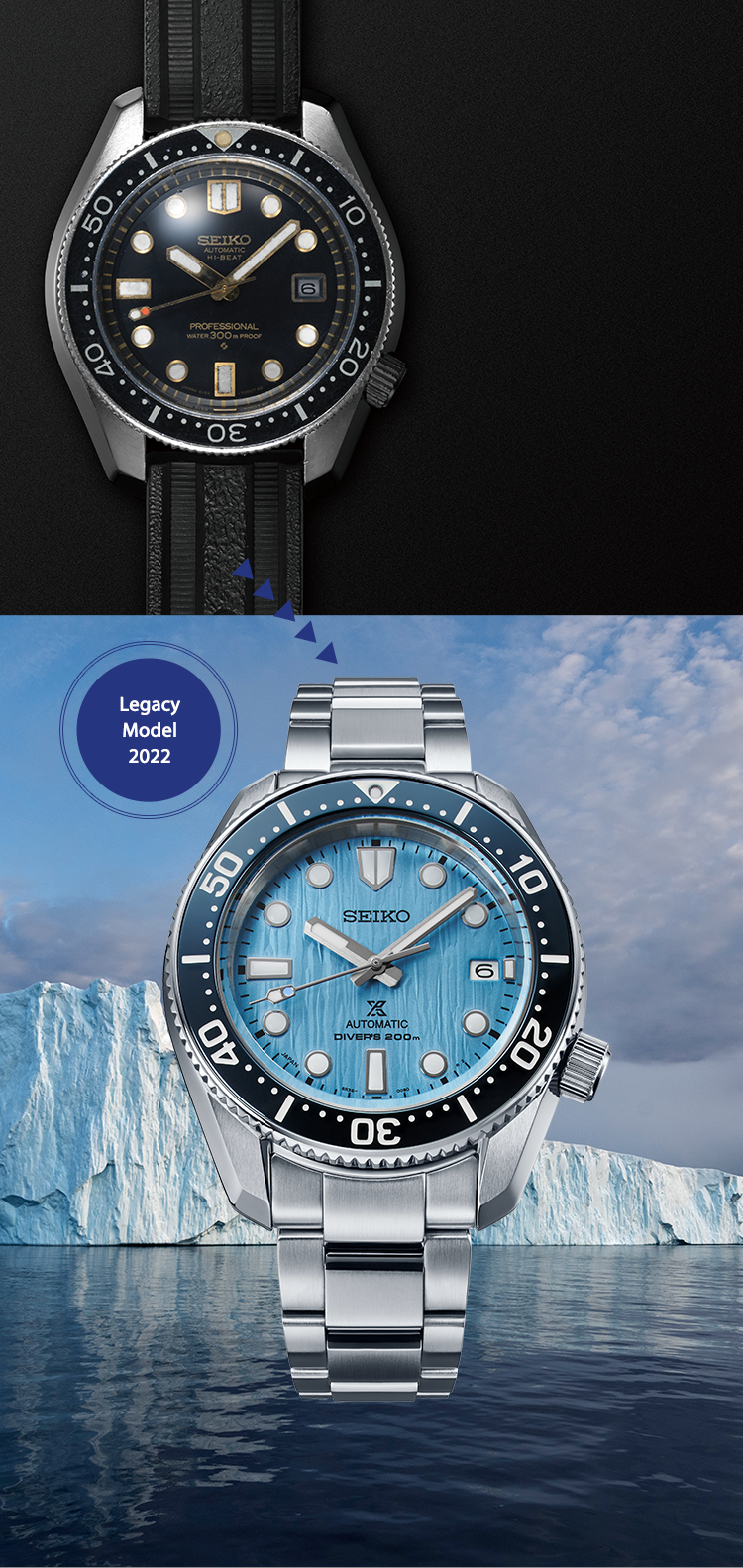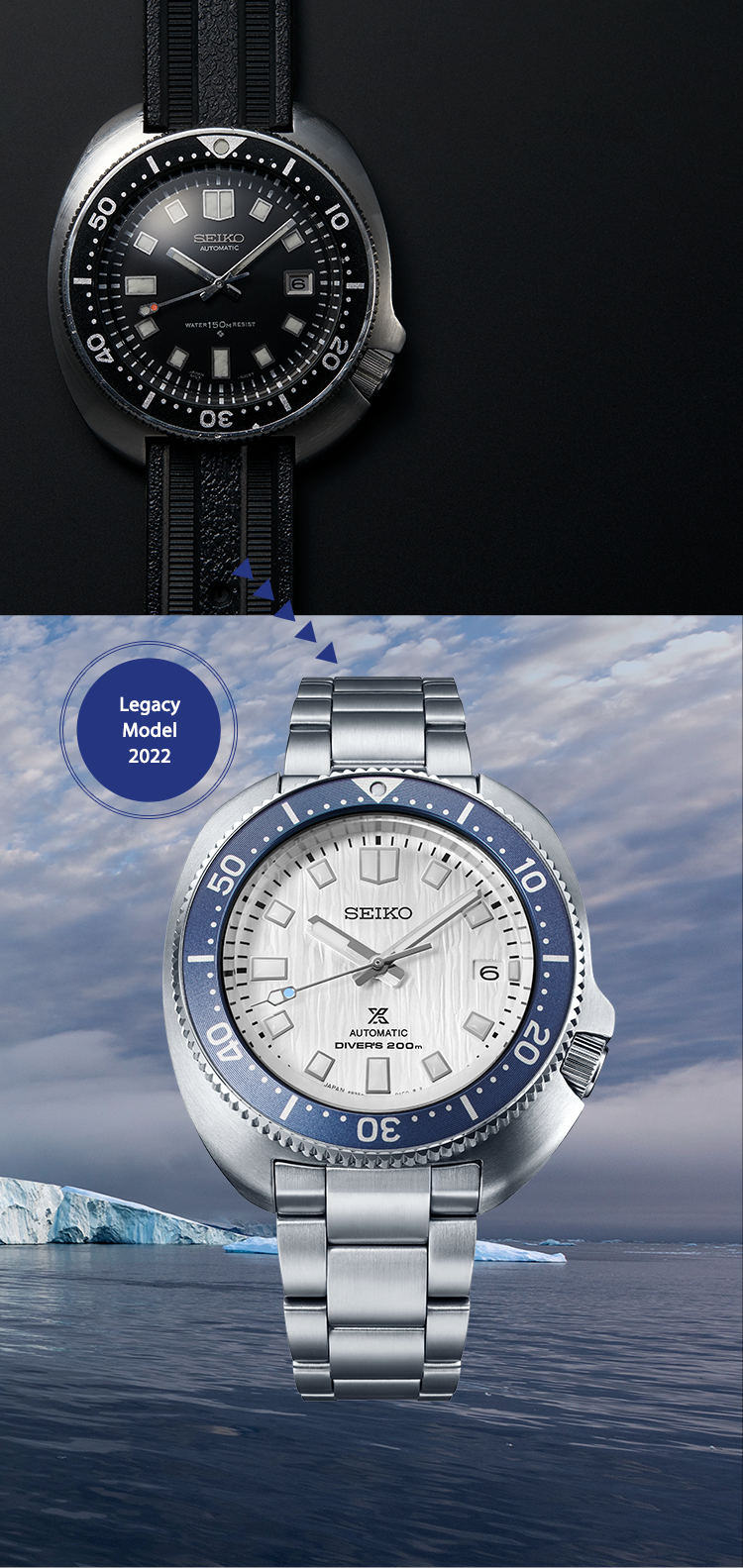1964 From Tokyo
to the World
32

In the 1960s, Japan was emerging from postwar reconstruction and in the midst of rapid economic growth. In 1964, Tokyo was selected to host the world- famous international sporting event for the first time ever. Seiko was soon appointed as the official timer. In addition to a competition stopwatch, Seiko provided a Crystal Chronometer, a portable quartz clock using the latest quartz movement. This clock served as the “master reference clock” for the longer track and field races.
Also in 1964, Seiko launched two historic masterpieces to coincide with the event. The first was the Crown Chronograph, the first domestically made wristwatch equipped with a stopwatch function. It had a simple design without a chronograph sub-dial, but with an easy-to-push stopwatch button and easy-to-read bezel, as well as a design that took advantage of the stopwatch function.
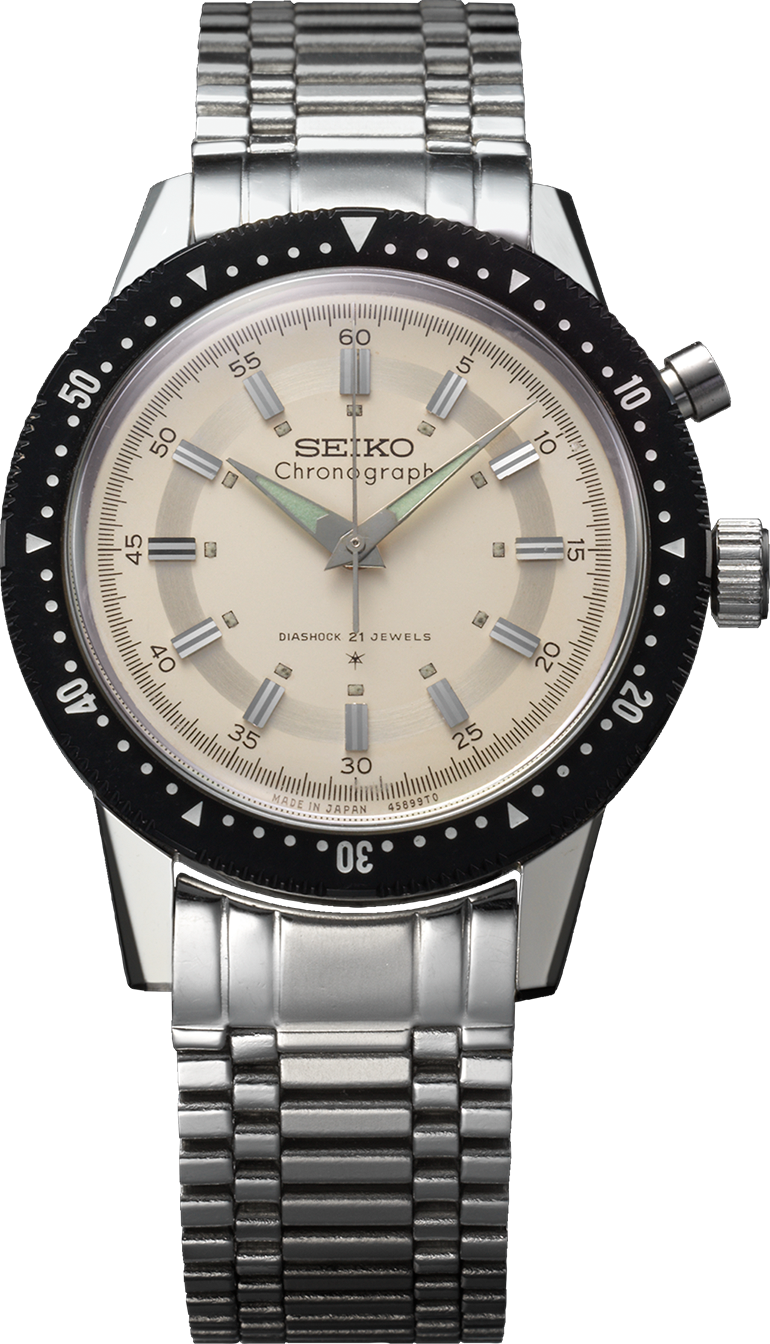
First Japanese Chronograph Watch:
Crown Chronograph
Each time you push the button at the 2 o'clock position, the center second hand alternates between Start, Stop, and Reset (returning to the 12 o'clock position). The design, which focused on maximizing usability and legibility, won great acclaim at the time.
-
1969
5 Sports Speedtimer
Combining a chronograph mechanism and an automatic movement is an enormously difficult technical challenge. Consequently, Seiko was extremely proud to release the world’s first automatic chronograph equipped with a vertical clutch system back in 1969.
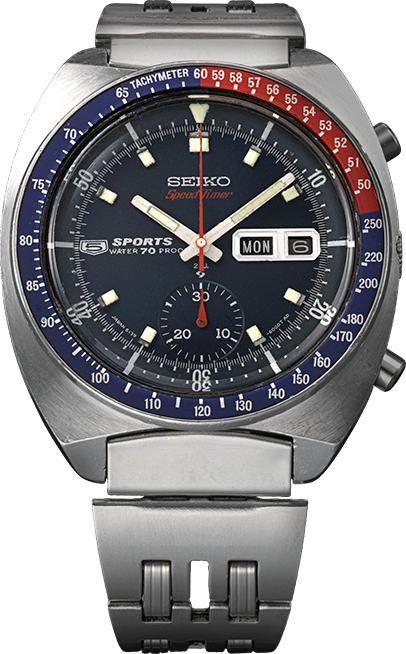
-
 2023
2023Commemorating the
1972 Mechanical Chronograph
Prospex SRQ047Based on the mechanical chronograph model released in 1972, this watch was designed to be both sporty and elegant. The streamlined case, two-tone dial, and other characteristic features were inherited from the original model.
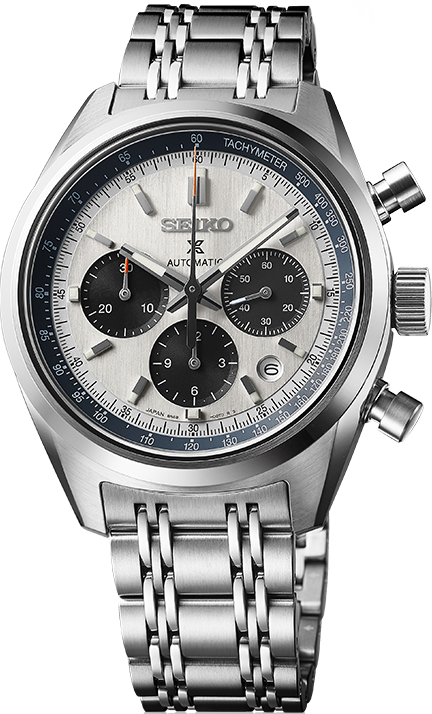
33

The second masterpiece was the Seiko World Time, the first wristwatch made in Japan with a GMT hand and world time display. In an era when overseas travel was becoming more common, this watch gained favor with those traveling across time zones.
With the launch of Grand Seiko in 1960, Seiko had proved to the world that it was a manufacturer of top-quality mechanical watches, able to compete with any global brand in both precision and appearance. Four years later, with these two landmark watches providing added functions - known internally as “Measuring Time” and “Transcending Time” - Seiko announced to the world that it was ready to aim even higher.
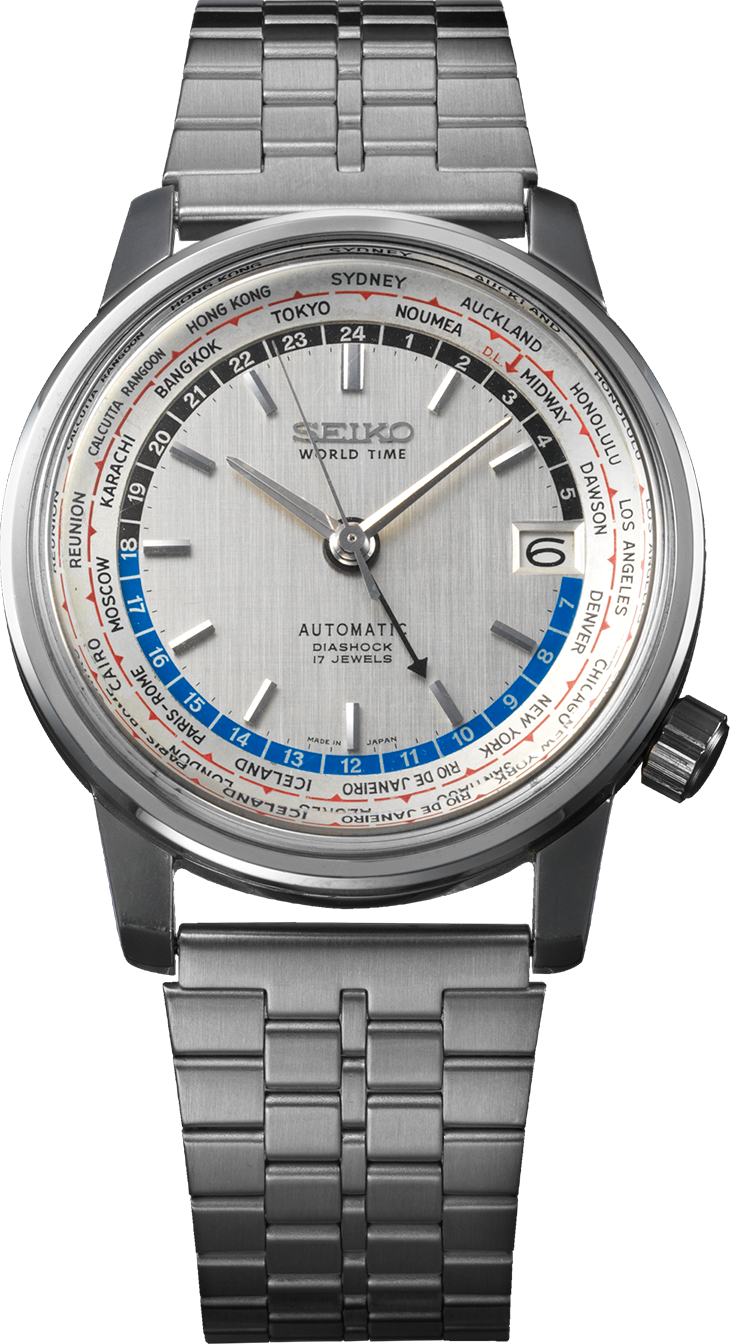
Seiko World Time: The First Domestic Watch
with a GMT Hand and World Time Display
This model was the first wristwatch made in Japan to have a separate GMT hand and a world time display. The inner rotating ring with the names of 24 cities is turned by a drive wheel linked to the crown at the 4 o’clock position.
The Most Recent Movement
with a GMT Function Prospex SPB381
This professional diver’s watch (with water resistance to 200 m) is powered by an automatic movement with a GMT function. The power reserve was extended to a full 72 hours.
![]()
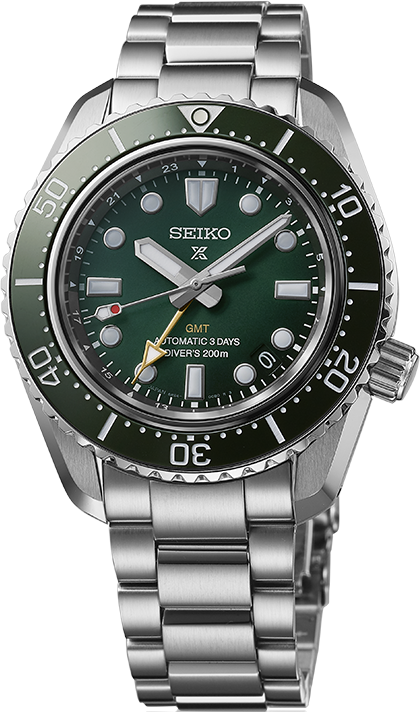
Seiko Diver’s Breakthrough
Since ages past, watchmakers have tried all sorts of techniques to keep water out of the mechanism, as water is the number one enemy of watches. The Seiko diver’s watch dramatically increased water resistance, making it truly a companion for people who venture into harsh climates. Seiko produced several models equipped with its proprietary waterproofing technology. Of these, the three original models have been the most cherished by watch fans: the 1965 Diver’s, the first diver’s watch made in Japan; the 1968 Diver’s, powered by a high-beat movement set in a one-piece case and offering 300 m water resistance; and the 1970 Diver’s, with a unique streamlined silhouette case.
High praise from professional divers and polar adventurers worldwide added further impetus to Seiko’s drive to constantly improve these watches.
Then, in 2022, Seiko released a collection that brought the original three models back to life through modern re-interpretations. The dials of these new versions capture images of glaciers and polar seascapes - the environment where Seiko diver’s watches were tested against the elements. These models are also part of Seiko’s Save the Ocean initiative to support marine conservation activities. This has further endeared them to consumers who care about the future of the oceans.
-
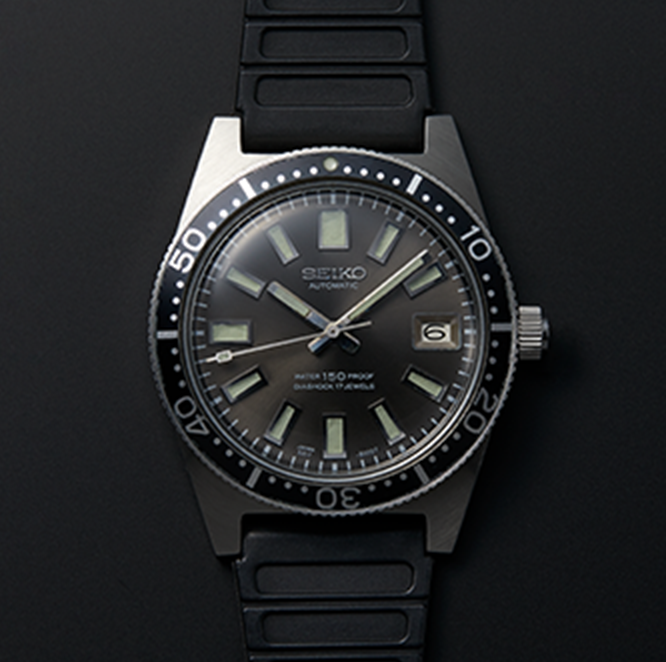
34
19651965 Diver’s
Japan’s first-ever diver’s watch featured an automatic movement and water resistance to 150 meters. This watch was worn by members of the Japanese Antarctic Research Expedition four times since 1966, as well as by adventurers crossing the Arctic and mountaineers summiting Mount Everest and other peaks.
-
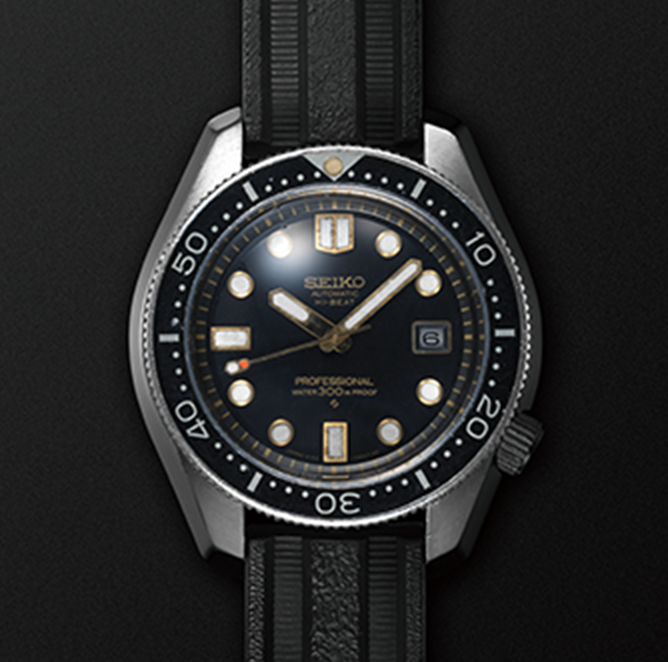
35
19681968 Diver’s
The world's most advanced high-beat (10-beat) movement at the time was mounted into a one-piece case construction without a case-back and boasted water resistance to 300 m. This model was on the wrist of Mr. Naomi Uemura when he reached the summit of Mount Everest in 1970.
-
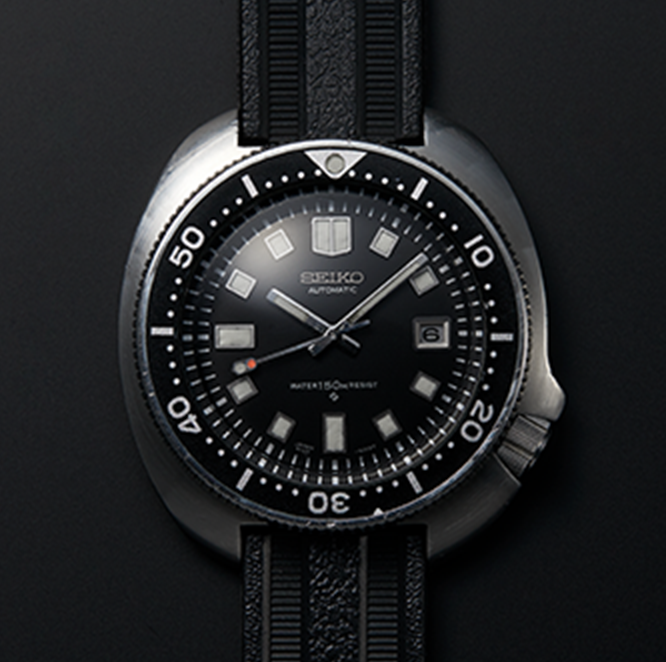
36
19701970 Diver’s
This model, which features a futuristic streamlined silhouette and water resistance to 150 m, was worn by adventurer Mr. Naomi Uemura on his 12,000 km solo dog-sled run in the Arctic Circle from 1974-1976.
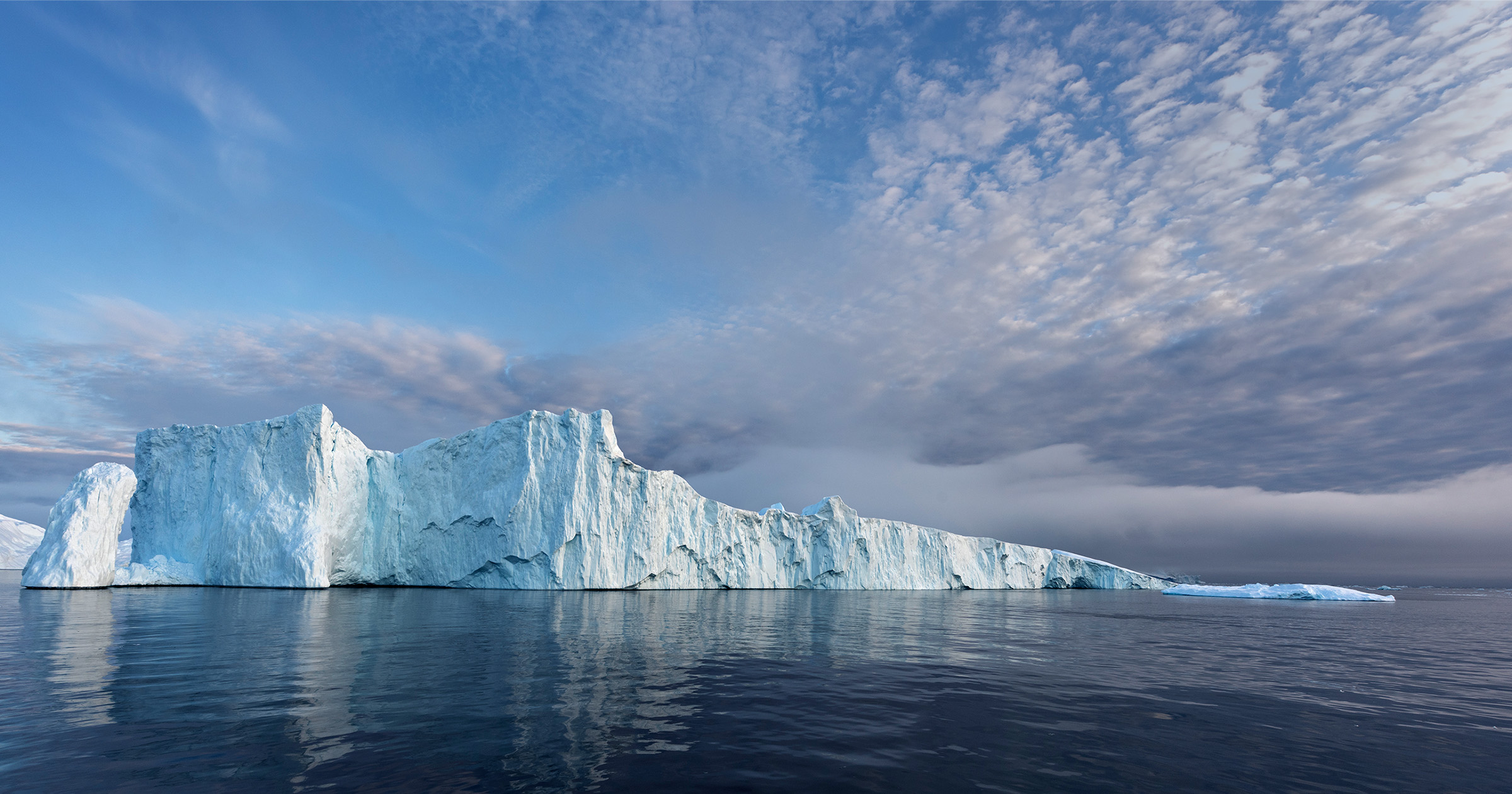
-


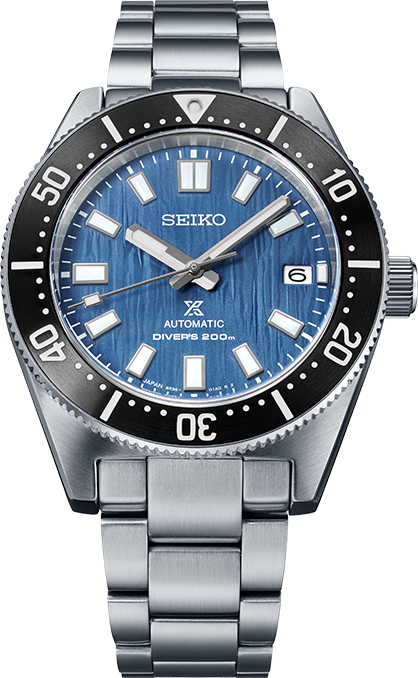
A modern re-interpretation of the 1965 Diver’s, the origin of Seiko diver’s watches. The pattern of polar glaciers is beautifully captured on the deep blue dial, perfectly encased by a solid black bezel.
-

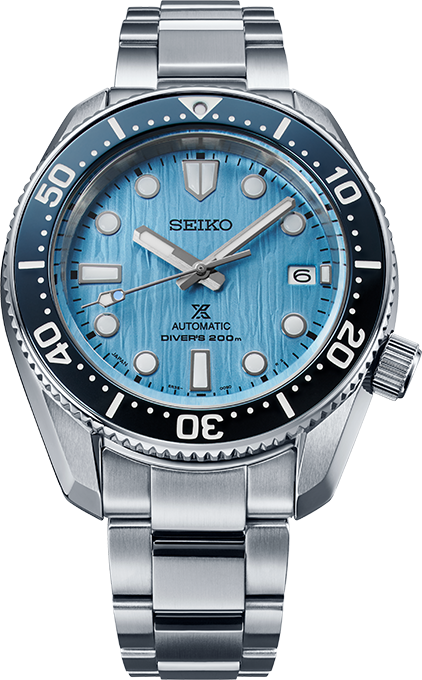
This modern re-interpretation hearkens back to the original 1968 Diver’s, evoking the image of Antarctica’s glaciers, where the challenge began. The refreshing light blue dial stands in striking contrast to the dark blue bezel, creating a feeling of calm.
-

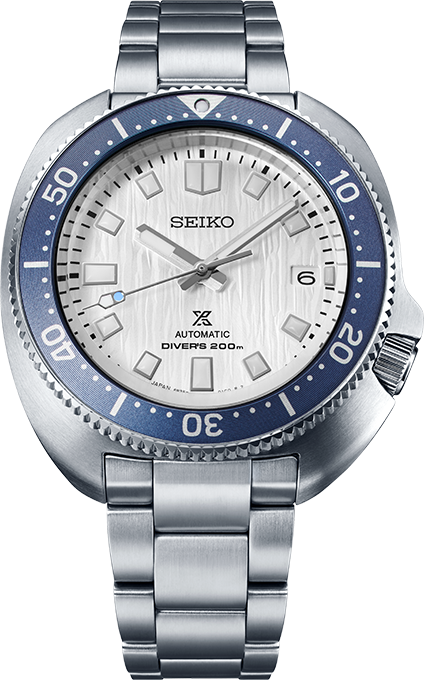
A modern re-interpretation of the 1970 Diver’s that supported Mr. Naomi Uemura during his Arctic Circle adventure. The serene white dial captures both the intense cold and ethereal beauty of Arctic Ocean glaciers.
37
Challenging the Deep Sea:
Seiko Diver’s Watches
One of the most important creations in Seiko diver’s watch history is the 600 m diver’s watch released in 1975. Its development began with a letter from a professional diver in 1968 stating, “No watch in the world that can withstand saturation diving operations for a week at depths of 300 m or more.”
Seiko took this as a challenge. After much experimentation and many prototypes, we created this extremely rugged model, the world’s first watch to use titanium and to withstand long-term use at depths of up to 600 m. The main problem is that watch crystals tend to be damaged at such depths, often due to gases trapped inside the mechanism. At the time, other companies’ approach to the problem was to equip their watches with a helium escape valve to release any gas trapped inside. Always looking for a better way to do things, Seiko specially developed an L-shaped gasket that makes the watch completely airtight, so that no gas gets in. This was truly a landmark event in diver’s watches.
The current world record
for free diving is 122 meters.

-
150m
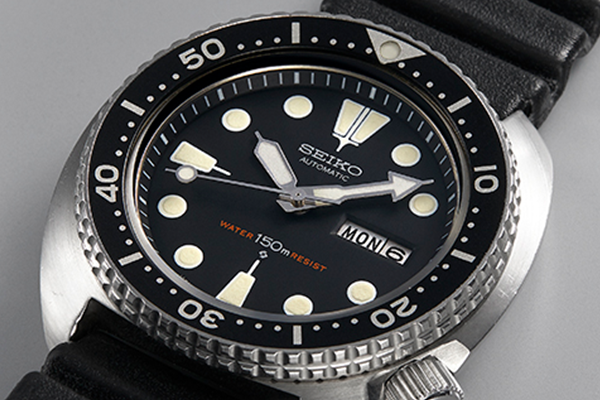
This model, which was produced from 1976, features water resistance to 150 m and a uniquely shaped 12 o’clock index. It is powered by the automatic Caliber 6306A.
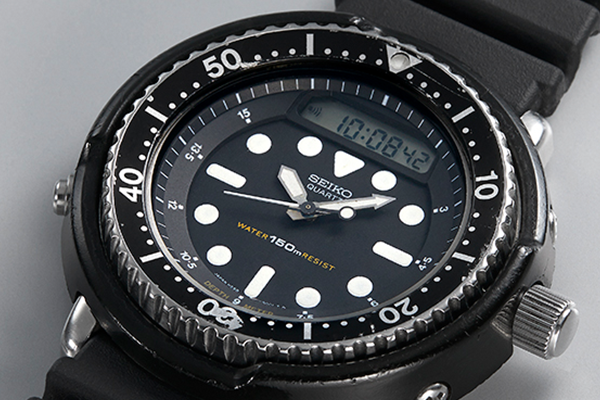
The world’s first hybrid diver’s watch with both an alarm and chronograph (1982). The LCD display was tilted so that the 12 o'clock side is higher, making it easier to read.
-
200m
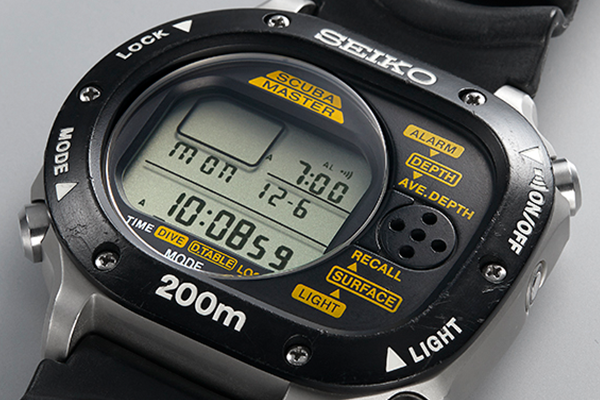
The world’s first 200 m water-resistant computerized diver’s watch (1990). This model was equipped with sensors to measure depth, diving time, and surface interval time.
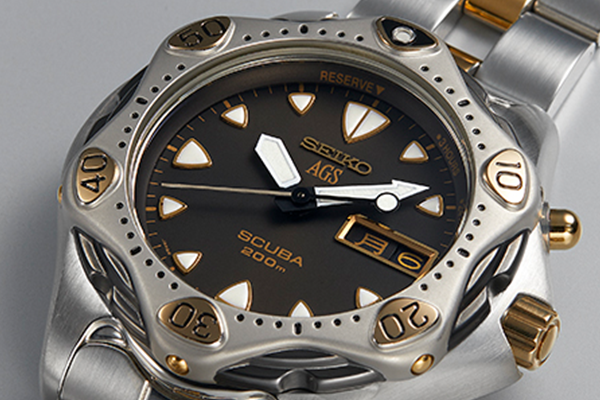
A diver’s watch powered by a Kinetic movement, which delivers the high precision of quartz but does not require batteries (1992). This model places emphasis on both ecology and safety.
-

The red king crab, a member of the hermit crab family, lives on the sea floor at depths of 30 to 360 m in cold environments such as the Arctic Ocean and the Sea of Okhotsk.
300m
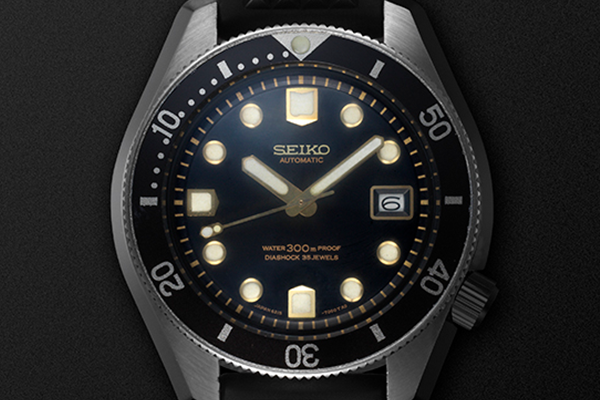
The first diver’s watch made in Japan with water resistance to 300 m (1967). This model adopted a one-piece case construction, integrating the case back with the case, and used a tough Hardlex crystal.
-

Coelacanths live at depths of 200 to 700 m. The first living coelacanth was discovered in South Africa in 1938.
600m
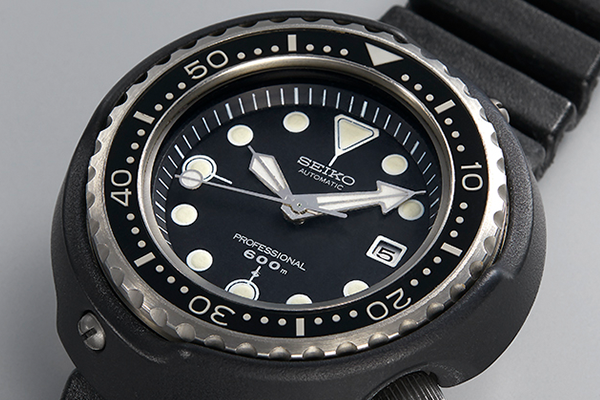
The world’s first diver’s watch suitable for saturation diving at up to 600 m, it was also the first to use titanium (1975). This model holds more than 20 patents for its exterior alone.
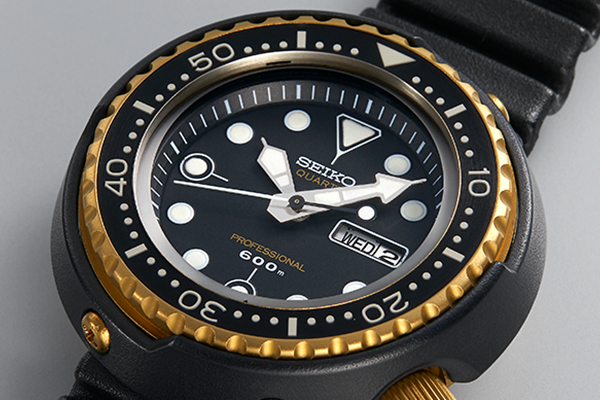
The world’s first saturation diving watch featuring a quartz movement with water resistance to 600 m (1978). This model withstood water pressure at a depth of 1,062 m on the deep-sea research submersible Shinkai 2000.
-
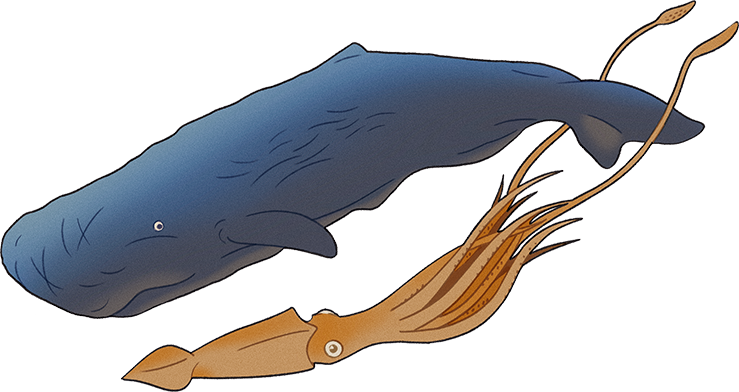
Sperm whales and giant squids are naturally gifted divers that can dive to depths of up to 1,000 m.
1,000m
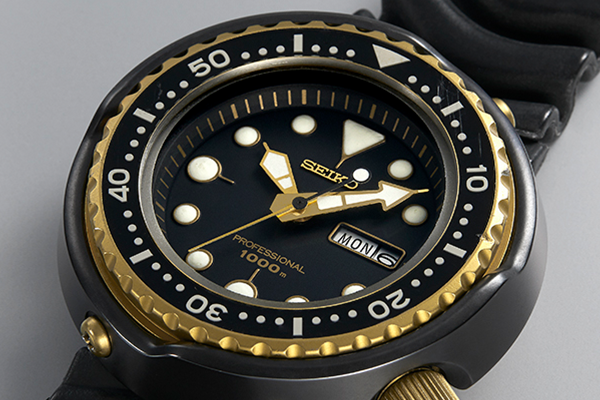
The world’s first diver’s watch to use a ceramic outer case with water resistance to 1,000 m, suitable for saturation diving (1986). Titanium, which offers excellent corrosion resistance, was used for the case.
38
The Diver’s Watch that
Performed Below 3,000 m
-
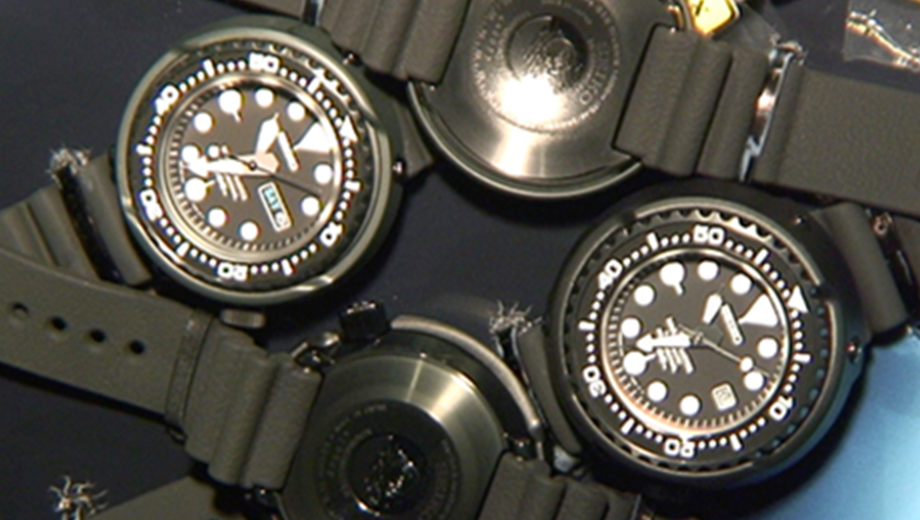
Source: provided by JAMSTEC
Proven to perform flawlessly over a mile underwater!
In 2014, two types of Seiko diving watches with tested water resistance to 1,000 m were attached to the exterior hull of the KAIKO 7000II, an unmanned, remotely-operated research submersible belonging to JAMSTEC (the Japan Agency for Marine-Earth Science and Technology). The results confirmed that both the mechanical and quartz models performed perfectly at depths exceeding 3,000 m (close to 10,000 feet), and well below their certified depth. Once again, Seiko proved that the ongoing evolution of its diver’s watches continues to amaze serious sports lovers worldwide.
Gratitude for the Past 100 Years100th Anniversary Limited Editions
The Seiko Brand is celebrating its 100th anniversary in 2024. As an expression of our gratitude to all the people who have supported the brand for so many years, Seiko has produced several very special models. For example, there is a limited-edition version of the Marinemaster, the flagship of Seiko diver’s watches. Powered by the thin automatic Caliber 6L37, first developed for diver’s watches, this model features a beautifully elegant design. On the left is the limited-edition model of the new Marinemaster, with a silver-white dial and silver bezel. There is also a special 100th anniversary Speedtimer, an automatic chronograph with a two-tone colored dial that makes it easy to see the hour, minute, and stopwatch hands, and a streamlined silhouette case. A limited-edition version with a chic grey dial is also in the works.
In addition, there is a special Presage model that pays homage to the classic 1924 enamel dial watch that was the first to bear the SEIKO name. Each of these special models commemorates the 100th anniversary of the Seiko Brand.
39
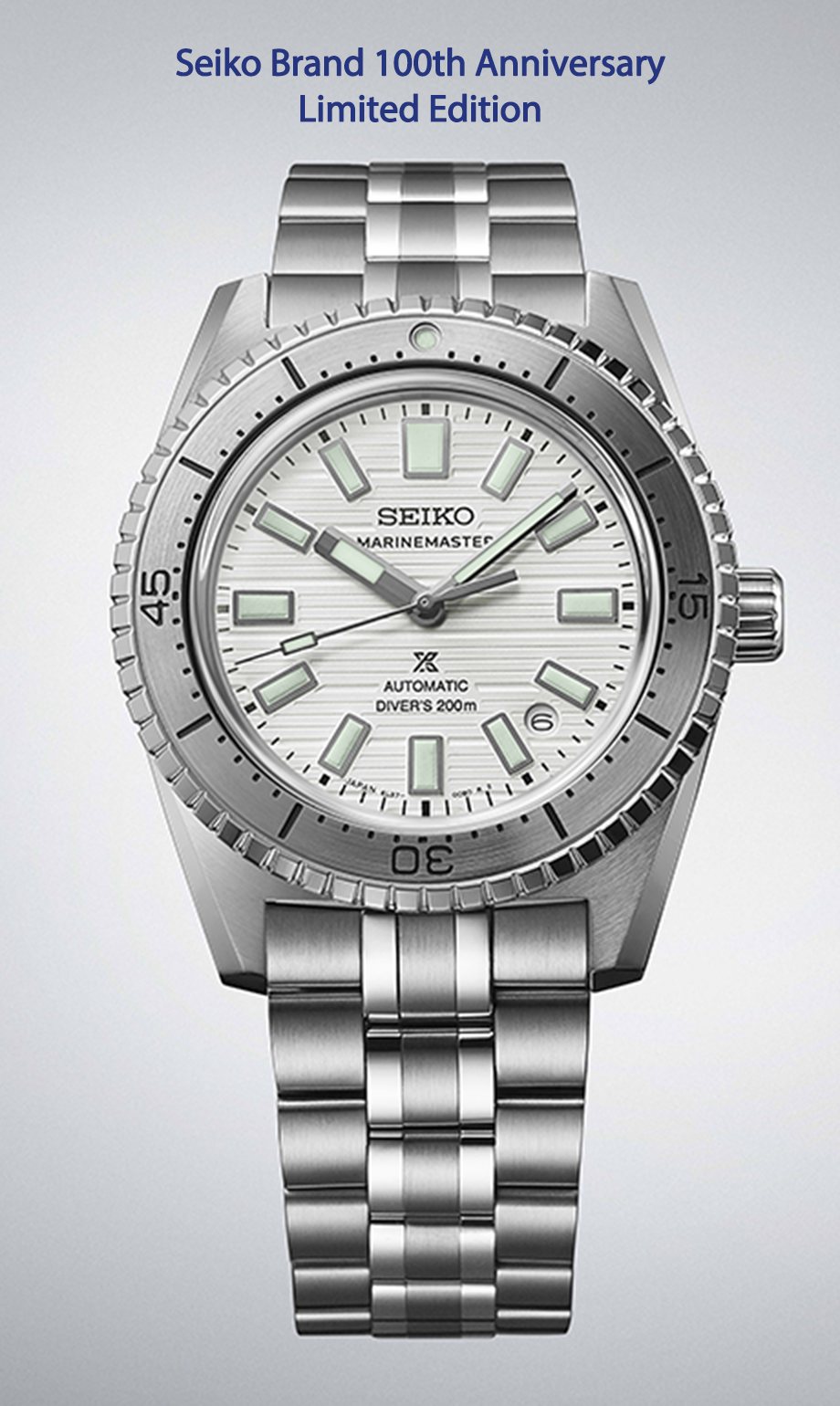
![]()
Seiko Prospex Marinemaster
1965 Heritage Diver’s Limited Edition
The 1965 Diver’s, reborn as a Marinemaster, with a modern, sophisticated design and powered by the high precision automatic Caliber 6L37 movement, is one of Seiko’s special 100th anniversary limited-edition models.
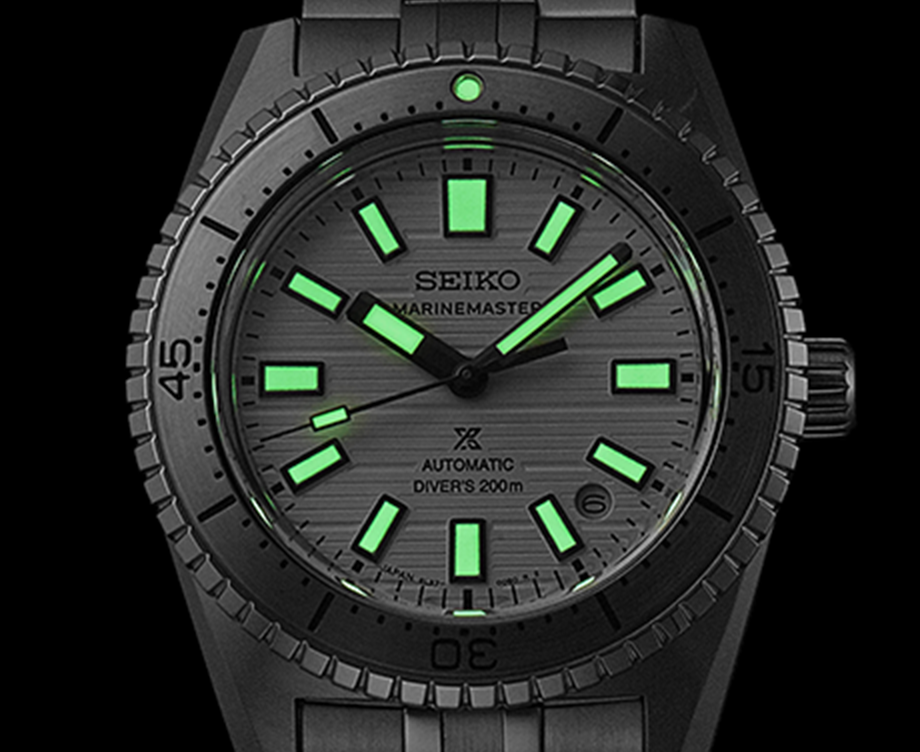
The use of high-luminance LumiBrite ensures exceptional legibility in the dark. This timepiece is also the first Seiko diver’s watch to have a see-through back.
40
Seiko Prospex Speedtimer Mechanical Chronograph
There is also a 100th anniversary model for the automatic chronograph. In addition to a vertical clutch to achieve excellent precision, it is equipped with a column wheel for smooth operation control and even greater stability.
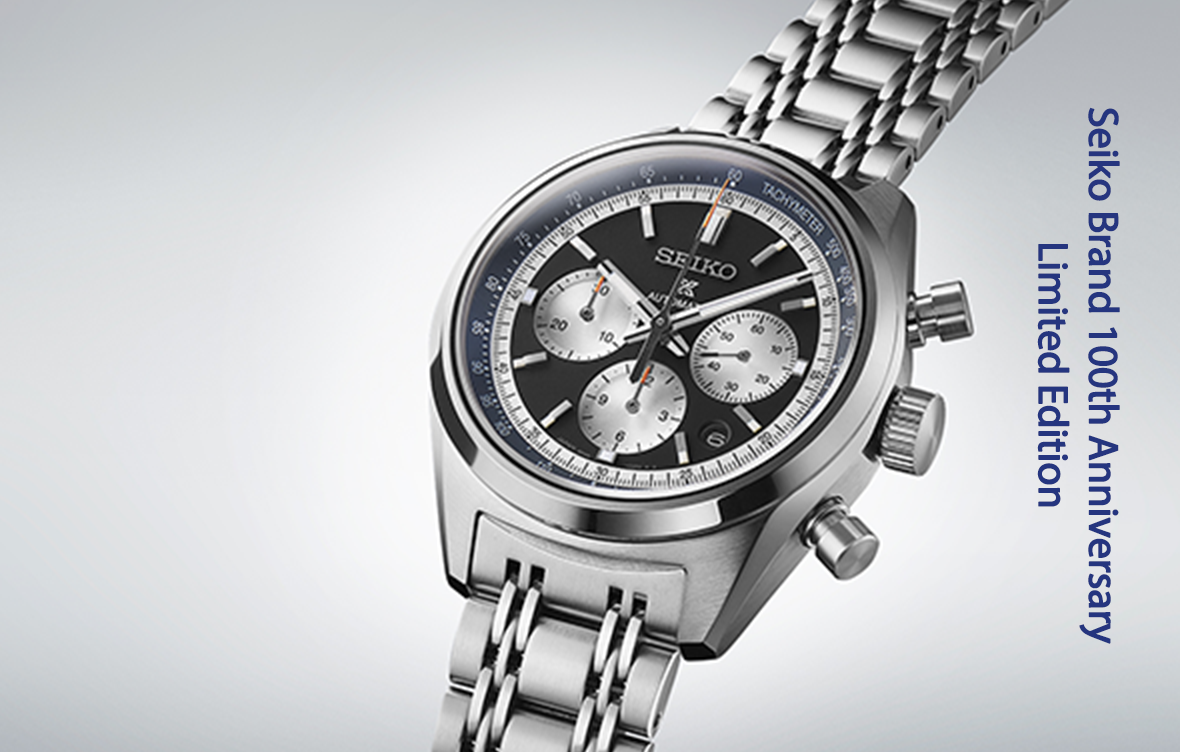
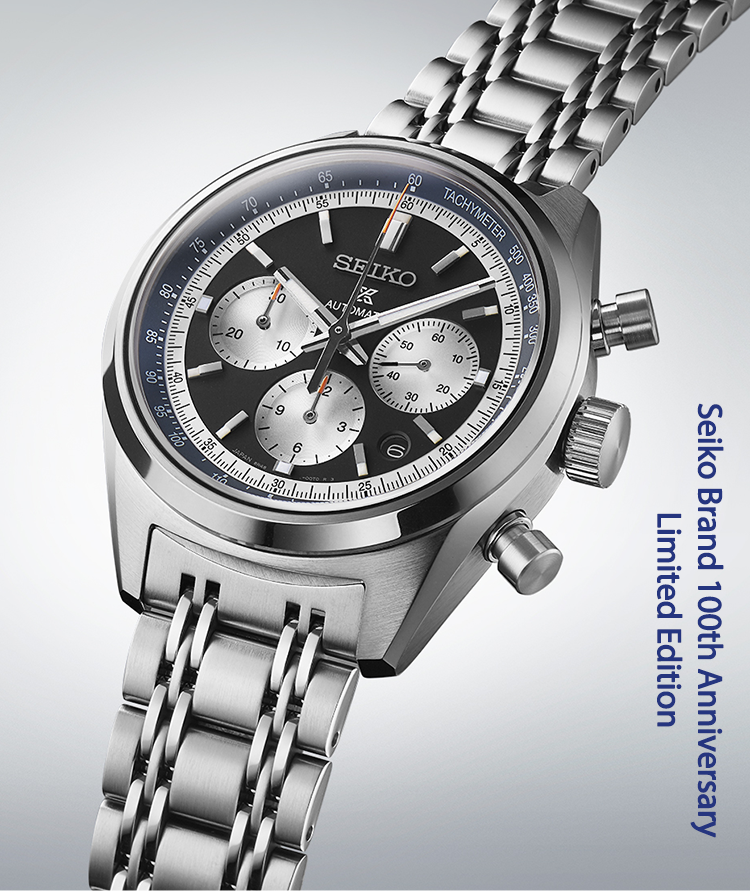
![]()
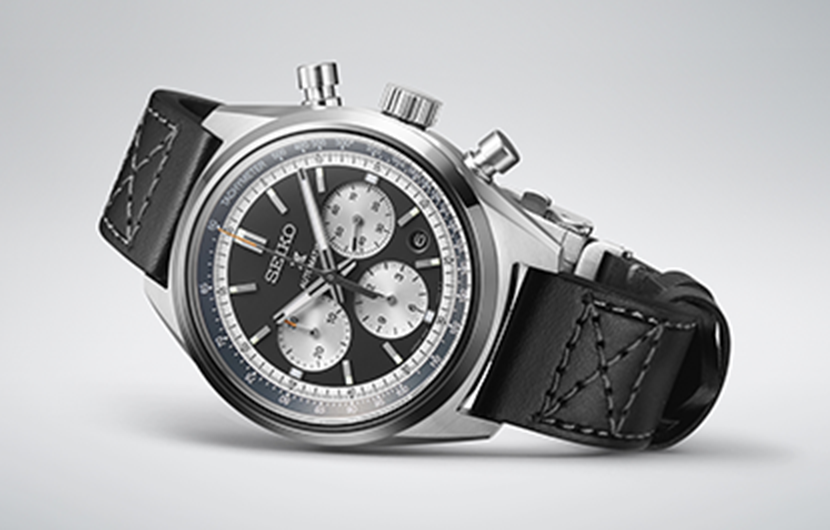
The orange chronograph hands are nostalgic for many watch fans. Limited models come with a leather strap.
41
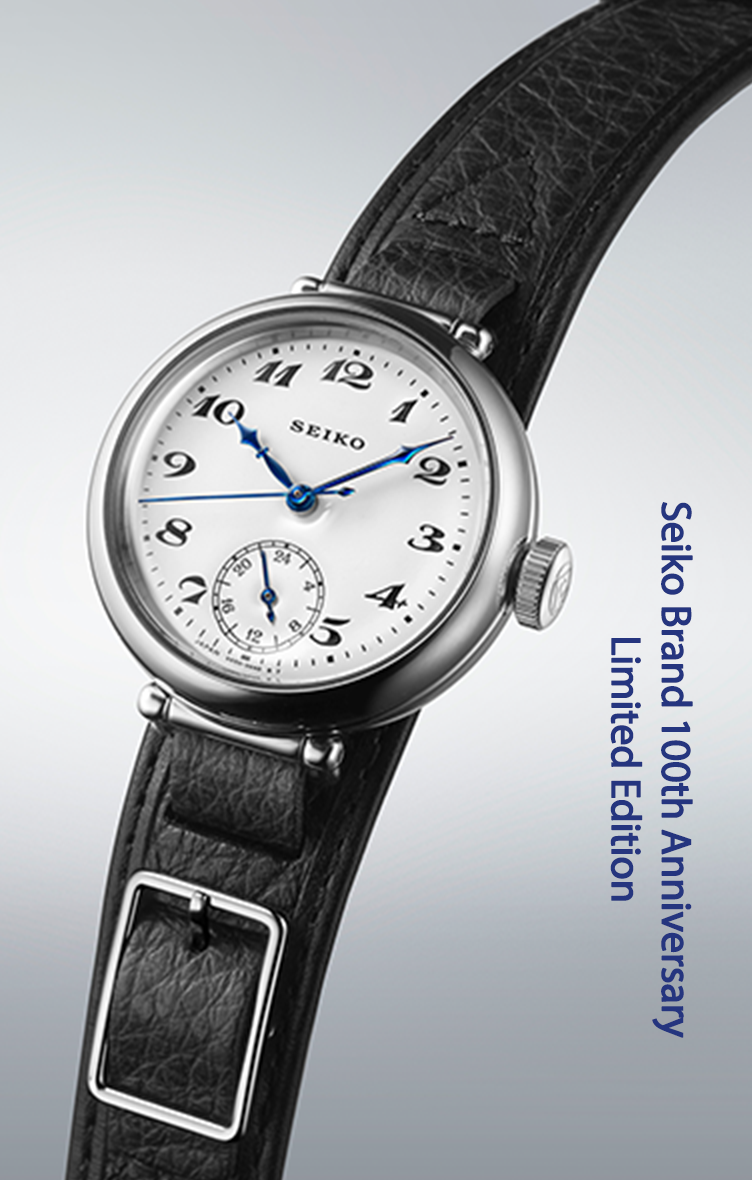
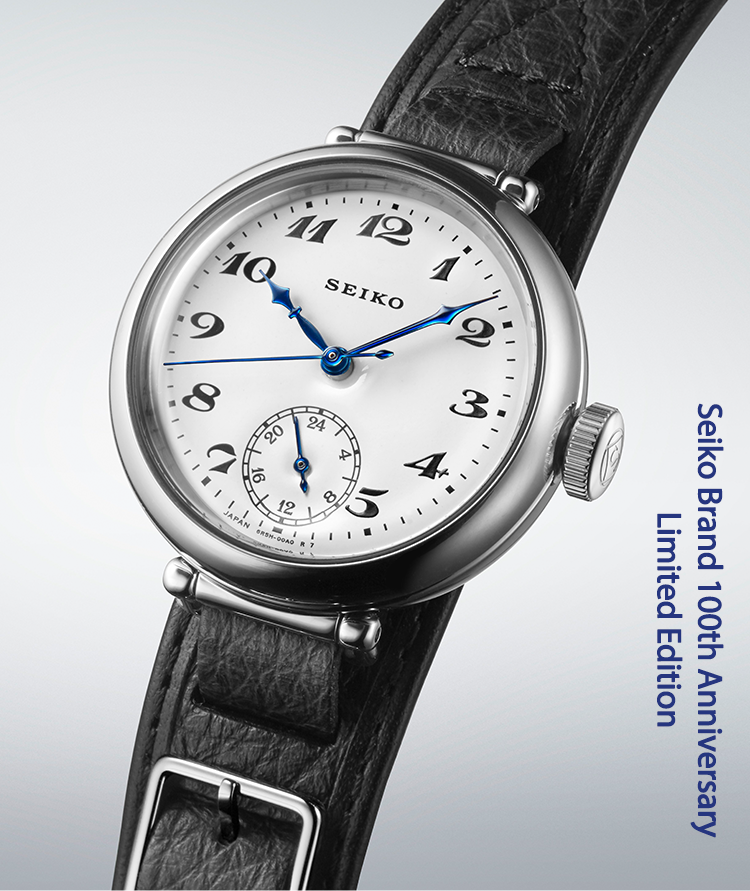
![]()
Seiko Presage
Kintaro Hattori Limited Edition
In 1924, the company introduced the first wristwatch with the SEIKO brand logo on its enamel dial. This vintage re-creation also features a pristine white enamel dial with retro-styled blue hands, evoking the classic styling that started the Seiko legend.
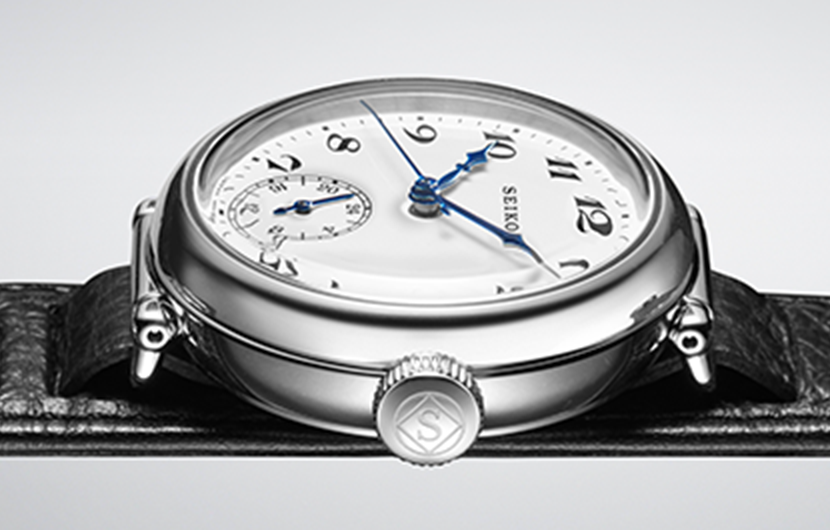
The case back and the crown carry the trademark “S,” registered in 1900.




